
True Blood is an American television drama series created and produced by Alan Ball, who also created Six Feet Under.
True Blood is based on The Southern Vampire Mysteries series of novels by Charlaine Harris, and details the co-existence of vampires and humans in Bon Temps, a fictional small Louisiana town. The series centers on Sookie Stackhouse (Anna Paquin), a telepathic waitress at a bar, who falls in love with vampire Bill Compton (Stephen Moyer).[1][2]
The show is broadcast on the premium cable network HBO in the United States. It is produced by HBO in association with Ball's production company, Your Face Goes Here Entertainment.[1] It premiered on September 7, 2008.
The first season received critical acclaim and won several awards, including one Golden Globe and an Emmy. The show's second 12-episode season premiered on June 14, 2009, and the third season on June 13, 2010. On June 21, 2010, HBO renewed True Blood for a fourth season, to debut in summer 2011.[3]
Development historySeries creator Alan Ball had previously worked with premium cable channel HBO on Six Feet Under, which ran for five seasons. In October 2010 (?), after Six Feet Under's series finished, Ball signed a 12-year agreement with HBO to develop and produce original programming for the network. True Blood became the first project under the deal, after Ball became acquainted with Charlaine Harris's Southern Vampire Mystery books.[4] One day, while early for a dental appointment, Ball was browsing through Barnes and Noble and came across Dead Until Dark, the first installment in Harris's series. He read the entries that followed and became interested in "bringing [Harris's] vision to television".[4][5] However, Harris already had two other adaptation options for the books. She said she chose to work with him, though, because "[Ball] really ‘got’ me. That’s how he convinced me to go with him. I just felt that he understood what I was doing with the books.”
The project's hour-long pilot was ordered concurrently with the finalization of the aforementioned development deal and was written, directed and produced by Balls.[1][4] Cast members Paquin, Kwanten and Trammell were announced in February 2007 and Moyer later on in April.[6][7] The pilot was shot in the early summer of 2007 and was officially ordered to series in August, at which point Ball had already written several more episodes.[1] Production on the series began later that fall,[8] with Brook Kerr, who portrayed Tara Thornton in the original pilot, being replaced by Rutina Wesley.[9] Two more episodes of the series had been filmed before the 2007-08 Writers Guild of America strike shut down production of the 12-episode first season until 2008.[10] That September, after only the first two episodes of the series had aired, HBO placed an order for a second season of twelve episodes of the show, with production scheduled to commence in January 2009 for a summer premiere.[11]
Title sequenceTrue Blood's Emmy-nominated title sequence was created by Digital Kitchen, a production studio that was also responsible for creating the title sequence of Six Feet Under and Showtime's Dexter. The sequence, which is primarily composed of portrayals of the show's Deep South setting, is played to "Bad Things" by Jace Everett.[12]
Digital Kitchen wished to explore themes of redemption and forgiveness in the opening title sequence.
Conceptually, Digital Kitchen elected to construct the sequence around the idea of "the whore in the house of prayer"[13] by intermingling contradictory images of sex, violence and religion and displaying them from the point of view of "a supernatural, predatory creature observing human beings from the shadows ..."[12] Digital Kitchen also wished to explore ideas of redemption and forgiveness, and thus arranged for the sequence to progress from morning to night and to culminate in a baptism.[13]
Most of the footage used in the sequence was filmed on location by Digital Kitchen. Crew members took a four-day trip to Louisiana to film and also shot at a Chicago church and on a stage and in a bar in Seattle.[13] Additionally, several Digital Kitchen crew members made cameo appearances in the sequence.
In editing the opening, Digital Kitchen wanted to express how "religious fanaticism" and "sexual energy" could corrupt humans and make them animalistic. Accordingly, several frames of some shots were cut to give movements a jittery feel, while other shots were simply played back very slowly. Individual frames were also splattered with drops of blood.[13] The sequence's transitions were constructed differently, though; they were made with a Polaroid transfer technique. The last frame of one shot and the first frame of another were taken as a single Polaroid photo, which was then divided between emulsion and backing. The emulsion was then filmed being further separated by chemicals and those shots of this separation were placed back into the final edit.[12]
Eight different typefaces, inspired by Southern road signage, were also created manually by Camm Rowland for cast and crew credits, as well as the show's title card.[13]
Cast and charactersSookie Stackhouse (Anna Paquin) is the main character of True Blood series.
Main article: Characters of True Blood
True Blood employs a broad ensemble cast composed of regular, central characters and a rotating group of impermanent supporting characters. Though the series is based in the fictional town of Bon Temps, Louisiana, a noticeable number of the actors comprising the cast are originally from outside the United States. In an interview, Ball explained that he didn't intentionally seek out "non-American" actors, but was willing to go anywhere he needed to in order "to find the actor who makes the character breathe". Ball went on to explain that, in casting, there was more of a focus on who would portray the character in a compelling way rather than who would physically resemble the characters from the book. Noting that there's a definite difference between the characters and storylines portrayed in True Blood and the ones depicted in The Southern Vampire Mysteries, he described Harris as being very understanding in terms of how her work was being reinterpreted.[38]
Principal castWithin the fictional universe depicted in True Blood, the show acknowledges as reality that supernatural creatures (such as vampires, telepaths, and shapeshifters amongst others) exist. Two years prior to the events taking place during the series, vampires "come out of the coffin" (a term coined as a play on "coming out of the closet"), when scientists in Japan invent a synthetic form of blood called "True Blood".E-1 No longer having to rely on human blood to survive, vampires are able to integrate themselves into human society (or "mainstream").E-1
The major characters of the first season are introduced amongst various intertwining plot lines that surround the Bon Temps bar "Merlotte's". The show's main protagonist, Sookie Stackhouse (Anna Paquin), is a telepath and waitress at Merlotte's.E-1 In the opening episode she saves Merlotte's first vampire customer, Bill Compton (Stephen Moyer), when a local couple attempts to drain him of his blood (vampire blood is known on the show as a human narcotic: "V" or "V Juice").E-1 Through the relationship that develops between Sookie and Bill, the viewer progressively learns more about vampire culture and the limitations of vampire physiology.
The major plot of the first season revolves around the murder of several women connected to Sookie's older brother, Jason (Ryan Kwanten).E-1 The women murdered include sexual partner Maudette Pickens (Danielle Sapia),E-1 on-and-off romance and Merlotte's waitress Dawn Green (Lynn Collins),E-3 grandmother Adele (Lois Smith) or simply "Gran",E-5 and girlfriend Amy Burley (Lizzy Caplan).E-11 Though the viewer is always aware of his innocence in their deaths, Detective Andy Bellefleur (Chris Bauer) targets him as the prime suspect in the investigation he conducts with Sheriff Bud Dearborne (William Sanderson) to identify their killer.E-1 Jason's best friends and co-workers, Hoyt Fortenberry (Jim Parrack) and Rene Lenier (Michael Raymond-James) provide him with support despite the turmoil he encounters.E-1 Rene, who becomes engaged to Merlotte's waitress Arlene Fowler (Carrie Preston),E-8 is eventually exposed as the Bon Temps murderer and is killed in a final confrontation with Sookie.E-12
Rutina Wesley, Stephen Moyer and Anna Paquin
A secondary plot in the first season (that later develops as the primary storyline in the second) revolves around Sookie's best friend Tara Thornton (Rutina Wesley).E-1 In the first episode, Tara is hired as a bartender at Merlotte's by shapeshifter,E-11 owner, and Sookie's admirer Sam Merlotte (Sam Trammell)E-1 with whom Tara later has a brief relationship.E-3 Tara's cousin Lafayette Reynolds (Nelsan Ellis) already works as a cook at Merlotte'sE-1 (in addition to several other jobs that include selling V)E-3 with Andy's cousin and Iraq War veteran, Terry (Todd Lowe).E-2 Tara's story is characterized by her relationship with her alcoholic and abusive mother Lettie Mae (Adina Porter)E-2 and her own inner "demons".E-10 During the season, Lettie Mae achieves sobrietyE-8 but Tara's life begins to spin out of control. Kicked out of her home and totaling her car in a drunk driving accident,E-10 she's taken in by "social worker" Maryann Forrester (Michelle Forbes).E-11 While staying with Maryann, Tara is introduced to "Eggs" Benedict Talley (Mehcad Brooks), to whom she is attracted.E-11
The final plotline of the first season revolves around the elements of vampire society that Sookie and Bill's relationship introduce. While trying to prove her brother's innocence in Maudette and Dawn's murders, Bill takes her to the vampire bar "Fangtasia" to investigate. There, Sookie is introduced to Fangtasia's owner and the vampire sheriff of "Area 5" in Louisiana: Eric Northman (Alexander Skarsgård).E-4 Eric is immediately interested in Sookie and her strange abilities, but his progeny and assistant Pam (Kristin Bauer) is less impressed.E-4 Eric employs Sookie to find a thief in his bar, but the perpetrator (a vampire) attempts to kill Sookie when she reveals his identity. Bill stakes and kills the thief to save her, but has committed a serious crime in killing another vampire.E-8 When Bill is tried for his crime, his punishment is to transform seventeen-year-old Jessica Hamby (Deborah Ann Woll) into a vampire to replace the one he destroyed.E-10
Though humans attracted to vampires (referred to as "fang bangers") flock to Fangtasia, not all people are accepting of the idea that vampires be given rights equal to those afforded the mortals of the True Blood universe. During the first season, one of the ways in which anti-vampire sentiment is expressed is through regular televised appearances by the "Fellowship of the Sun",E-2 a Dallas-based church that is eventually run by Reverend Steve Newlin (Michael McMillian)E-3 after his father and family are killed in a strange "accident".E-2
During the second season, the influence of Maryann Forrester and the conflict between vampires and humans is expanded. Most of the cast from the first season returns and several new main characters are introduced. The same style of interconnected story telling used in the first season is repeated, with the foremost plot focusing on Maryann Forrester being revealed as a maenadE-19 with the power to influence humans.E-15 She begins by manipulating Tara and Eggs to achieve her strange goals,E-20 but eventually she is able to control almost the entire population of Bon Temps.E-22
While Maryann begins establishing her hold on Bon Temps, Sookie is recruited by EricE-15 to investigate the disappearance of his 2000-year-old maker and the sheriff of Area 9 in Texas: Godric (Allan Hyde).E-17 While Sookie is absent from Bon Temps, Sam hires Daphne Landry (Ashley Jones) to join Merlotte's staff.E-13 Daphne begins a romance with Sam,E-16 is revealed to be a shapeshifter,E-17 and then later exposed as working for Maryann.E-18 Jason also leaves Bon Temps for Dallas to join the Fellowship of the Sun,E-14 which Reverend Newlin has steered in a new militant direction despite the protestations of his wife Sarah (Anna Camp).E-13 Godric is discovered in the custody of the Fellowship,E-17 and one of Godric's lieutenants, Isabel Beaumont (Valerie Cruz),E-17 sends her human boyfriend Hugo (Christopher Gartin)E-18 to assist Sookie in infiltrating the church. Though Eric's primary interest in Dallas is finding Godric, he also attempts to place himself between Sookie and Bill. To accomplish this, he enlists the aid of Bill's maker Lorena (Mariana Klaveno);E-17 making a more prominent contribution to the cast after a brief introduction in the first season.E-5 In the penultimate episode of the second season, once the conflict in Texas is concluded, the vampire queen of Louisiana Sophie-Anne Leclerq (Evan Rachel Wood) is introduced.E-23 Both Bill and Eric visit her in an attempt to find out how to defeat Maryann.E-23
With season 3 came the addition of Sam's younger brother Tommy Mickens (Marshall Allman), werewolf Alcide Herveaux (Joe Manganiello), Wiccan waitress Holly Cleary (Lauren Bowles), and Jesús Velasquez (Kevin Alejandro). All of these actors, along with Denis O'Hare's Russell Edgington, are confirmed to return for the fourth season. [39]
Main article: List of True Blood episodesFollowing the creation of synthetic blood, vampires have progressed from legendary monsters to fellow citizens overnight. Sookie Stackhouse (Anna Paquin) is a telepath and waitress at Merlotte's in the small Louisiana town of Bon Temps, owned by Sam Merlotte (Sam Trammell), a shapeshifter—though this secret is kept hidden. One night, Sookie meets Bill Compton (Stephen Moyer), a handsome 173-year-old vampire who has returned to Bon Temps following the death of his last remaining relative. As she cannot hear his thoughts, she finds it easy to be in his company and, over the first season, the two become romantically involved.
Season one
Main article: True Blood (season 1)The main mystery of the first season concerns the murders of women connected to Sookie's brother, Jason (Ryan Kwanten). Maudette Pickens and Dawn Green are both strangled shortly after having been alone with Jason. Though Detective Bellefleur has little doubt that Jason is the killer, the town sheriff does not suspect him. Jason and Sookie's grandmother is murdered shortly afterward. At the end of the season it is revealed that Arlene Fowler's fiancé, Rene Lenier, is actually a man named Drew Marshall who has created a false identity, complete with Cajun accent. He has been killing women he considers "fang-bangers".
The first season also focuses on Sookie's relationship with Bill and Sam's relationship with Sookie's friend Tara. Bill explains the rules of being a vampire to Sookie and, after killing a vampire to defend her, is forced to "turn" a young girl named Jessica into a vampire as punishment. In the last episode of the season, Jessica is left under Bill's care. After Maudette and Dawn's murders, Jason becomes addicted to vampire blood and has a short relationship with another addict, Amy Burley, which ends when she is murdered by Drew. The season ends with the discovery of a body in Detective Andy Bellefleur's car in Merlotte's parking lot.
Season two
Main article: True Blood (season 2)Season two focuses on two main plots – in the first, the disappearance of the 2,000-year old vampire Sheriff of Area 9, Godric, causes Eric to enlist Sookie and Bill's aid in finding the ancient vampire in Dallas. Their paths cross Jason's as he seeks to discover meaning in his life with the Fellowship of the Sun, a church dedicated to anti-vampire activities.
The second plot line concerns a maenad named Maryann who visits Bon Temps after Tara attracts her attention at the end of the first season. Maryann is a figure from Sam's past and knows his true identity as a shapeshifter. Her influence on the town and its residents results in mayhem that grows more destructive as the season progresses. At the end of the season, Bill proposes to Sookie, but is kidnapped by unknown assailants when Sookie retreats to the bathroom to consider his proposal.
It loosely follows the plot of the second novel of The Southern Vampire Mysteries, Living Dead in Dallas. In addition, the character of Sophie-Anne Leclerq, initially introduced in the sixth novel Definitely Dead, was introduced as a major supporting character.
Season three
Main article: True Blood (season 3)On July 30, 2009, HBO confirmed that True Blood would be renewed for a third season,[40] which began shooting on December 3, 2009.[41] It premiered on June 13, 2010, simultaneously on HBO and HBO Canada, and contained 12 episodes.
Season three loosely follows the plot of the third novel of The Southern Vampire Mysteries, Club Dead, and introduces werewolves to the show's mythology. It also introduces the characters of Russell Edgington, the Vampire King of Mississippi, and his private investigator, Franklin Mott. In addition, some characters from the fourth novel Dead to the World are introduced: Crystal Norris as Jason's love interest, her family of werepanthers from Hotshot, and Sookie's fairy godmother, Claudine. Sookie's heritage as part fairy is also revealed later in the season, a major plot element from the eighth novel, From Dead to Worse.
ReceptionCritical reception of True Blood has generally been favorable, despite the fact that initial impressions were mixed. The New York Post critic wrote of the opening episodes: "If HBO's new vampire show is any indication, there would still be countless deaths – especially among vampire hunters and the viewers who love them – because everyone would be dying of boredom. And so it is with HBO's new series from death-obsessed Alan Ball, creator of the legendary Six Feet Under, whose new show True Blood, won't so much make your blood run cold as it will leave you cold."[42]
Whereas USA Today concluded: "Sexy, witty and unabashedly peculiar, True Blood is a blood-drenched Southern Gothic romantic parable set in a world where vampires are out and about and campaigning for equal rights. Part mystery, part fantasy, part comedy, and all wildly imaginative exaggeration, [True] Blood proves that there's still vibrant life — or death — left in the 'star-crossed cute lovers' paradigm. You just have to know where to stake your romantic claim."[43]
By the end of the first season, True Blood had a score of 64, indicating generally favorable reviews, on Metacritic, an aggregator of critical responses.[44] The second season received a more favorable score of 74 on Metacritic.[45] As of the third season, True Blood's rating on Metacritic has risen to 79.[46]
InfluenceTrue Blood was the subject of a recent Sesame Street sketch, entitled "True Mud". The parody features puppet versions of Sookie, Bill, Lafayette, Sam, Tara and Sheriff Dearborn. In the skit, Muppet Sookie struggles to fulfill Muppet Bill's pleas for a pint of "True Mud," as the other characters try to speculate if he is a "grouch". [47]
Allegory for LGBT rightsThe struggle for vampire equality in True Blood has been seen as an allegory for the LGBT rights movement.[48] Charlaine Harris, the author of the book series on which the show is based, stated that her initial characterization for the vampires were as "...a minority that was trying to get equal rights".[49][50] Several phrases in the series are borrowed and adapted from expressions used against and about LGBT people, such as "God Hates Fangs" (God Hates Fags) and "Coming out of the coffin" (coming out of the closet).[50]
Entertainment Weekly's critic-at-large Ken Tucker wrote that the show is built "around a series of metaphors: Vampire rights stand in for gay rights, and now the clever laughs elicited from this bratty-vampire girl represent an extreme of adolescent rebelliousness".[48] David Bianculli of NPR wrote "[True Blood is] big on allegory, and the tension about accepting vampires into society is an obvious play on civil rights in general, and gay rights in particular".[50] However, the television series' producer Alan Ball rebukes critics, stating that such a comparison is "lazy".[49]
RatingsThe first episode of True Blood debuted at a very modest 1.44 million viewers compared to the network's past drama premiers such as Big Love which premiered at 4.56 million, and John from Cincinnati which debuted at 3.4 million.[51] However, by late November 2008, 6.8 million a week were watching: this figure included repeat and on-demand viewings.[52] The season finale's viewership was 2.4 million.
The second season premiere of the series (June 14, 2009) was viewed by 3.7 million, making it the most watched program on HBO since the series finale of The Sopranos. The total number of viewers for the season premiere, including the late night replay, was 5.1 million.[53] The tenth episode of the second season (August 23, 2009) was seen by 5.3 million viewers, a new record for the series.[54] The second season's finale (September 13, 2009) was seen by 5.1 million viewers. An average of 12.4 million a week watched the second season.[55]
The eleventh episode of the third season (August 29, 2010) set a new record: with 5.44 million viewers it was the highest-rated cable TV show of the week with viewers aged 18-49.[56]
source: wikipedia









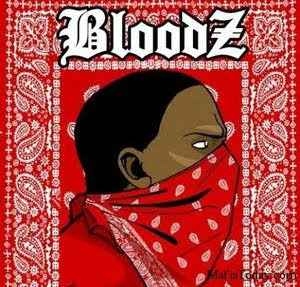

 In 1993, a group known on the East Coast, a band such as the United Blood Nation. Born in New York's Riker's prison, Iceland, African American inmates created a group as a way to by the Latin Kings, to protect the most often in the prison at the time. Although the United Blood Nation (UBN) was born in prison, as a member who was released to the streets, they formed street gangs on the east coast with the same name, while copies of Los Angeles Blood lifestyle.
In 1993, a group known on the East Coast, a band such as the United Blood Nation. Born in New York's Riker's prison, Iceland, African American inmates created a group as a way to by the Latin Kings, to protect the most often in the prison at the time. Although the United Blood Nation (UBN) was born in prison, as a member who was released to the streets, they formed street gangs on the east coast with the same name, while copies of Los Angeles Blood lifestyle.



 The Piru Street Boys Turquoise or was Los Angeles, California area Allianz street gangs (the larger alliances, blood) is based in Compton, that spread Carson, Inglewood and Watts.
The Piru Street Boys Turquoise or was Los Angeles, California area Allianz street gangs (the larger alliances, blood) is based in Compton, that spread Carson, Inglewood and Watts.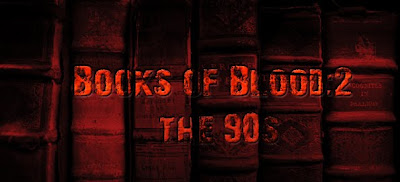


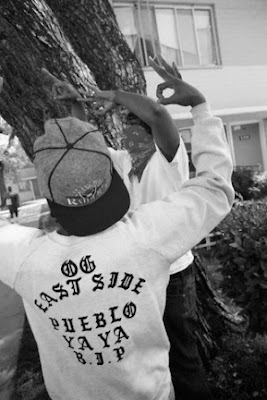



 Started in Los Angeles as a street gang in the 1960s, spread to Texas prisons in the 1980s. Besides serving the broader purpose of neighborhood protection, the Bloods street gang originally arose as an opposing force to their rivals the Crips, who had been allying with various other gangs in the 1970s and becoming more powerful. As a result, the Piru gang allied with the Denver Lanes, the LA Brims and the Lueeders Park Hustlers to become the Bloods in 1972. "Bloods" was a term that African-American fighting men called each other in the Vietnam War. The Pirus later changed their name to Bloods.
Started in Los Angeles as a street gang in the 1960s, spread to Texas prisons in the 1980s. Besides serving the broader purpose of neighborhood protection, the Bloods street gang originally arose as an opposing force to their rivals the Crips, who had been allying with various other gangs in the 1970s and becoming more powerful. As a result, the Piru gang allied with the Denver Lanes, the LA Brims and the Lueeders Park Hustlers to become the Bloods in 1972. "Bloods" was a term that African-American fighting men called each other in the Vietnam War. The Pirus later changed their name to Bloods.




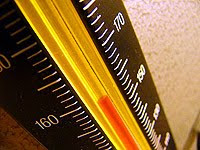 High blood pressure or hypertension is a medical condition in which there was an increase in blood pressure are chronic (long term). Patients who have at least three blood pressure readings exceeding 140/90 mmHg at rest is estimated to have high blood condition. Blood pressure is always high is one risk factor for stroke, heart attack, heart failure and arterial aneurysm, and is a major cause of chronic heart failure.
High blood pressure or hypertension is a medical condition in which there was an increase in blood pressure are chronic (long term). Patients who have at least three blood pressure readings exceeding 140/90 mmHg at rest is estimated to have high blood condition. Blood pressure is always high is one risk factor for stroke, heart attack, heart failure and arterial aneurysm, and is a major cause of chronic heart failure. As the Crips grew in South Central Los Angeles in the early 1970s, it began against other gangs. It was during this time of conflict that several gangs joined forces to combat the growing Crip threat. The most famous band in this group are Piru Street Boys. They lead the revolt against the Crips and was instrumental in the creation of blood-ties in 1972.
As the Crips grew in South Central Los Angeles in the early 1970s, it began against other gangs. It was during this time of conflict that several gangs joined forces to combat the growing Crip threat. The most famous band in this group are Piru Street Boys. They lead the revolt against the Crips and was instrumental in the creation of blood-ties in 1972.


 Piru gang signs in the blood is a matter that is required to be mastered, because by mastering these Piru sign the communication between groups will more easily and smoothly.
Piru gang signs in the blood is a matter that is required to be mastered, because by mastering these Piru sign the communication between groups will more easily and smoothly. In the blood gangs also have a tradition of praying in a special way that has been set by the group.
In the blood gangs also have a tradition of praying in a special way that has been set by the group.
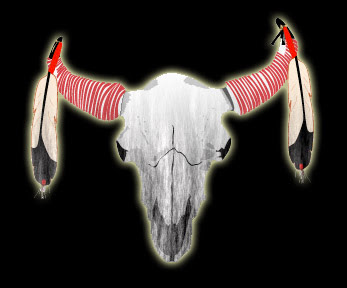 Blood Tribe / Kainai and the Confederacy and Peigan Siksika possession as the oldest inhabitants of the western prairie. Blackfoot can be found from other language groups as diverse believe, leading linguists, that the Blackfoot people have been living separately from other language groups for a long time. Archaeologists date the level of hunting culture in the field to 11,000 years before present.
Blood Tribe / Kainai and the Confederacy and Peigan Siksika possession as the oldest inhabitants of the western prairie. Blackfoot can be found from other language groups as diverse believe, leading linguists, that the Blackfoot people have been living separately from other language groups for a long time. Archaeologists date the level of hunting culture in the field to 11,000 years before present. Code in an alley Piru Gangs such as the blood is very important for them to have, with the code enables them to communicate with each other, thus simplifying the purpose gangs.
Code in an alley Piru Gangs such as the blood is very important for them to have, with the code enables them to communicate with each other, thus simplifying the purpose gangs.
 Bloods members identify themselves by means of various gang indicators, such as colors, clothing, symbols, tattoos, jewelry, graffiti, language, and hand signs. The Bloods gang color is red. They like to wear sports clothing, including team "Starter" jackets that show their gang color. Some of their favorite teams include the San Francisco Forty Niners, the Philadelphia Phillies and the Chicago Bulls. They are also known to Dallas Cowboys apparel, which carry the logo contains a five-pointed star.
Bloods members identify themselves by means of various gang indicators, such as colors, clothing, symbols, tattoos, jewelry, graffiti, language, and hand signs. The Bloods gang color is red. They like to wear sports clothing, including team "Starter" jackets that show their gang color. Some of their favorite teams include the San Francisco Forty Niners, the Philadelphia Phillies and the Chicago Bulls. They are also known to Dallas Cowboys apparel, which carry the logo contains a five-pointed star.
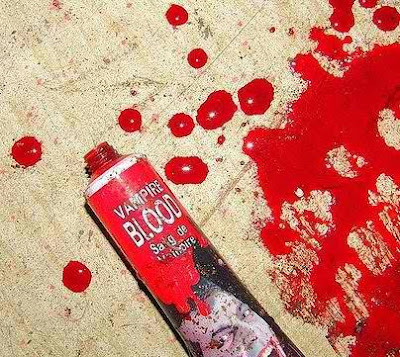 As the Crips grew in South Central Los Angeles in the early 1970s they began targeting other gangs. It was during this time of conflict that several gangs joined forces to combat the growing Crip threat. The most well known gang within this group was the Piru Street Boys. They lead the revolt against the Crips and were instrumental in creating the Bloods gang in 1972.
As the Crips grew in South Central Los Angeles in the early 1970s they began targeting other gangs. It was during this time of conflict that several gangs joined forces to combat the growing Crip threat. The most well known gang within this group was the Piru Street Boys. They lead the revolt against the Crips and were instrumental in creating the Bloods gang in 1972.